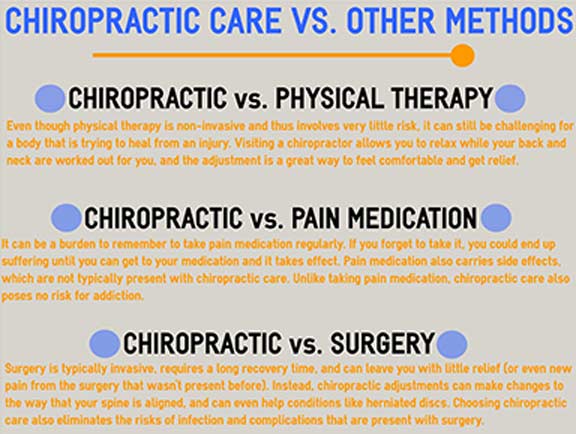The Influence Of Position On Pain In The Back: Strategies For Sustaining Correct Positioning During Daily Activities
The Influence Of Position On Pain In The Back: Strategies For Sustaining Correct Positioning During Daily Activities
Blog Article
Content Author-McKinley Mcgowan
Keeping proper stance isn't nearly staying up right; it has to do with aligning your body in a manner that sustains your back and reduces the risk of pain in the back. chiropractic care for sciatica sit, stand, and relocate throughout the day can substantially influence your back health and wellness. Yet exactly how precisely can https://backadjustmentchiropracto17384.59bloggers.com/31096419/evaluating-the-influence-of-chiropractic-care-care-on-athletic-performance-outcomes ensure excellent placement continually, even throughout busy days loaded with numerous activities? Let's dig https://www.verywellhealth.com/sciatica-in-pregnancy-5186003 into the refined yet impactful changes you can make to your day-to-day regimen to maintain your back satisfied and healthy and balanced.
Relevance of Appropriate Pose
Correct pose is essential in preserving a healthy and balanced back and protecting against pain. When you sit or stand with great pose, your back remains in placement, decreasing stress on your muscular tissues, ligaments, and joints. This positioning permits the body to disperse weight equally, protecting against too much stress and anxiety on particular locations that can cause pain and pain. By keeping your spinal column appropriately lined up, you can also improve your breathing and food digestion, as slouching can press body organs and limit their functionality.
In addition, keeping excellent pose can boost your general appearance and positive self-image. When you stand tall with your shoulders back and head held high, you show confidence and show up even more approachable. Great posture can likewise make you really feel more stimulated and alert, as it promotes proper blood flow and allows your muscular tissues to function efficiently.
Including correct posture right into your daily routine, whether resting at a workdesk, walking, or exercising, is necessary for stopping pain in the back and promoting total well-being. Keep in mind, a tiny change in just how you hold on your own can make a considerable difference in just how you feel and work throughout the day.
Common Postural Mistakes
When it comes to preserving excellent pose, numerous people unconsciously make common mistakes that can contribute to neck and back pain and pain. Among one of the most prevalent mistakes is slouching or hunching over while resting or standing. This placement puts too much stress on the spinal column and can result in muscular tissue imbalances and discomfort in the future.
One more typical blunder is overarching the reduced back, which can squash the natural contour of the back and trigger pain. Additionally, crossing legs while sitting might really feel comfy, but it can produce an inequality in the hips and hips, leading to postural concerns.
Making use of a pillow that's also soft or also solid while sleeping can additionally impact your placement and add to pain in the back. Last but not least, constantly craning your neck to consider displays or adjusting your position regularly can stress the neck and shoulders. Bearing in mind these typical postural mistakes can aid you maintain better positioning and lower the risk of pain in the back.
Tips for Correcting Placement
To boost your placement and reduce back pain, it's vital to focus on making small adjustments throughout your everyday routine. Beginning by being mindful of your posture. When sitting, ensure your feet are level on the floor, your back is straight, and your shoulders are relaxed. Stay clear of slouching or leaning to one side. Usage ergonomic chairs or cushions to sustain your reduced back.
When standing, distribute your weight equally on both feet, maintain your knees slightly bent, and embed your pelvis. Engage your core muscles to support your spine. Take breaks to extend and walk around if you have an inactive task. Integrate workouts that strengthen your core and back muscles, such as planks or bridges.
While sleeping, utilize a cushion that supports the natural curve of your neck to maintain appropriate back placement. Prevent sleeping on your stomach, as it can strain your neck and back. By bearing in mind these ideas and making small changes, you can progressively fix your alignment and reduce pain in the back.
Conclusion
Keep in mind, keeping great posture is crucial to preventing back pain and promoting spine health. By being mindful of your alignment, distributing weight equally, and engaging your core muscle mass, you can minimize pressure on your back and minimize the threat of discomfort and injury. Include ergonomic assistance, take regular breaks to stretch, and reinforce your core and back muscles to preserve correct positioning throughout the day. Your back will thank you for it!
